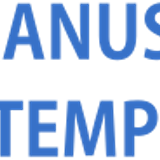FOAMING CAN REDUCE LUBRICATION OF LUBRICANTS SO CAUSING WEAR
Abstract
Foaming on oil has a very undesirable effect which can cause an increase in oxidation by intensive mixture with air, damage to cavitation, and insufficient oil transportation in the lubrication circulation system which can cause poor lubrication. Adding the appropriate antifoam additives is one way to avoid
foaming. To determine the tendency of foaming formation which has an impact on the stability of the performance of lubricating oil, so that there is wear and tear in research in the laboratory by means of; 6 types of lubricating oil taken from the market are tested for viscosity, index viscosity, flash point, pour point and color. As well as to determine the effect of foam formation tested foaming tendency / stability and wear before and after antifoam added from 6 (six) types of lubricated oil obtained from the market. The result after adding antifoam additives, three types (GB, SH, and MH) of six types of lubricated oil were tested, the tendency of foaming and the wear results met the required limits, namely 0/50/0 ml for foaming tendency and maximum 0.5 mm for wear, while for 3 (three) oils, the results are not satisfying the required limits.
Keywords
Full Text:
PDFReferences
Ajay Sharma, Narendra Singh and P.K. Rohatgi, 2013, 'Study of wear pattern behavior of aluminum and mild steel discs using pin on disc tribometer' European Journal of Applied Engineering and Scientific Research, 2 (4):37-43.
ASTM D892 - 13e1, 2013, 'Standard test method for foaming characteristics of lubricating oils', Copyright ASTM International, 100 Barr Harbour Drive, West Conshohocken PA 19428 USA.
ASTM D4172 94, 2010, 'Standard Test Method for Wear Preventive Characteristics of Lubricating Fluid (Four-Ball Method)', Copyright ASTM International, 100 Barr Harbour Drive, West Conshohocken PA 19428 USA.
Carden, P.; Pisani, C.; Andersson, J.; Field, I.; Lain, E.; Bansal, J.; Devine, M., 2013, 'The Effect of Low Viscosity Oil on theWear', Friction and Fuel Consumption of a Truck Engine heavy duty. SAE Int. J. Fuels Lubr., 6, 311319.
Chandran Suja V, Frostad JM, Fuller GG., 2016, 'Impact of compressibility on the control of bubblepressure tensiometers'. Langmuir 32:1203112038.
Khan, Mohd Shadab, Zahir Hasan, and Yaqoob Ali Ansari, 2014, 'Statistical Analysis for the Abrasive Wear Behavior of Al 6061'; Journal of Minerals and Materials Characterization and Engineering 2.04 (2014): 292.
Lantz S, Zakarian J, Deskin S, Martini A., 2017, 'Filtration effects on foam inhibitors and optically detected oil cleanliness'. Tribol Trans 60:11591164.
Li X, Karakashev SI, Evans GM, Stevenson P., 2012, 'Effect of environmental humidity on static foam stability'. Langmuir 28:40604068.
Malam R.K. et al., 2016, 'Penelitian Durabilitas Minyak Lumas Mesin Sepeda Motor SAE 10W-40, API SL/ JASO MB melalui Uji Jalan', Lembaran Publikasi Minyak dan Gas Bumi LEMIGAS, Vol.50.Nomor 1, April 2016. ISSN: 2089-3396.
Marotrao, T. K., 2012, 'Physical Properties of Oil Blend and Their effects on Lubrication Properties'. 22498974.
Serpetsi SK, Yiantsios SG., 2012, 'Stability characteristics of solutocapillary Marangoni motion in evaporating thin ?lms'. Phys Fluids 24:122104.
Sheng S., 2014, Gearbox typical failure modes, detection and mitigation methods (National Renewable Energy Laboratory, Golden, CO).
Vasanthan B, Devaradjane G, Shanmugam V, 2015, 'Online condition monitoring of lubricating oil on test bench diesel engine & vehicle'. J. Chem. Pharm. Sci. 4:31520.
Wolak A, Zaj?c G, Kumbr V, 2018, 'Evaluation of engine oil foaming tendency under urban driving conditions'. Eksploatacja i Niezawodnosc Maintenance and Reliability. 20 (2): 229235.
DOI: https://doi.org/10.29017/SCOG.41.3.332

This work is licensed under a Creative Commons Attribution-NonCommercial-NoDerivatives 4.0 International License.






